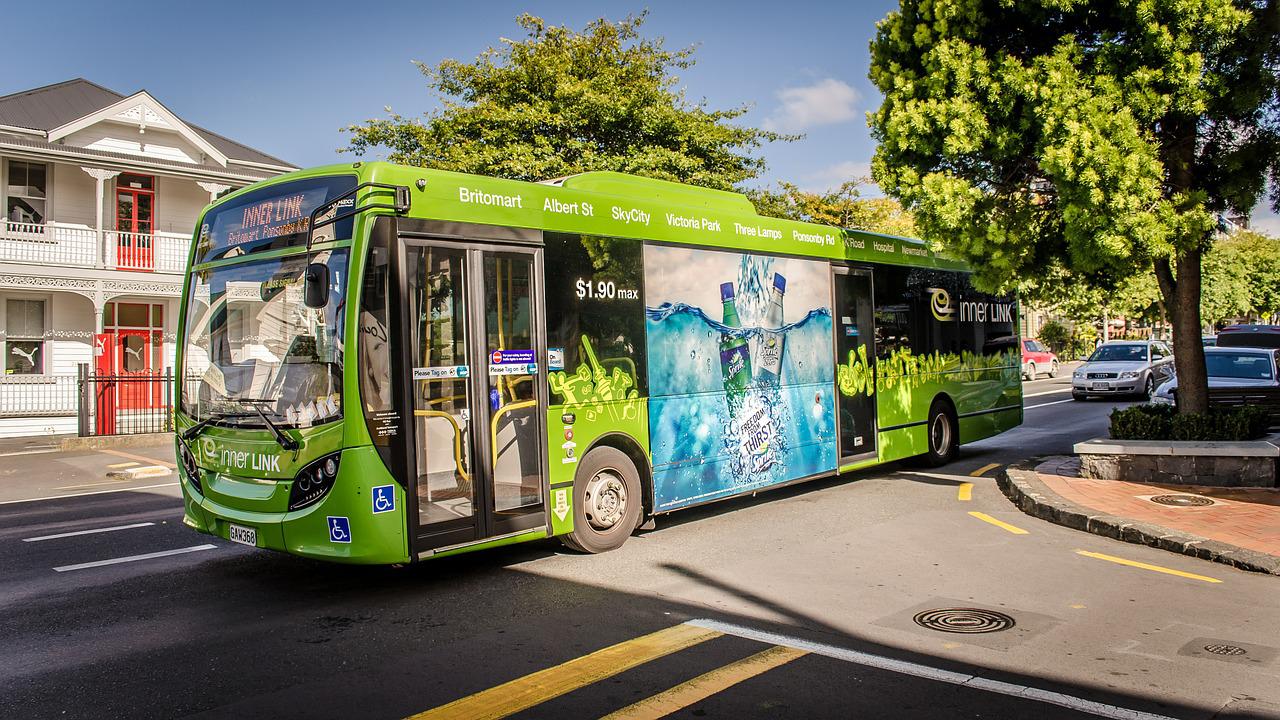Promotions are often used daily in most retail environments, including but not limited to supermarkets, drugstores, fashion retailers, electronics stores, online retailers, and convenience stores. In today’s economy, retailers offer hundreds or even thousands of promotions simultaneously. Unfortunately, only 33% of trade promotions in the U.S. are profitable. Trade promotion optimization (TPO) is an efficient tool that can significantly improve this low profitability rate. In this article, we aim to teach interested readers the concepts of Trade Promotion and TPO through a question-answer method. Moreover, this article walks readers through developing a TPO decision support tool using mathematical programming (mathematical optimization). The questions in this article are prepared and arranged in a logical order to bring knowledge to a conscious level so that curiosity arises among interested readers.
What is trade promotion?
Trade refers to the relationship between manufacturers and retailers. Trade promotion is a marketing tactic aimed at retailers by manufacturers to increase the sales of their products, enhance awareness when introducing new products, clear leftover inventory, bolster customer loyalty, and improve the retailer’s competitiveness. Manufacturers spend 15-25% of their revenue on trade promotions.
Where and how often is trade promotion needed?
Promotions are often used daily in most retail environments, including but not limited to supermarkets, drugstores, fashion retailers, electronics stores, online retailers, and convenience stores. In today’s economy, retailers offer hundreds or even thousands of promotions simultaneously. For example, a typical supermarket, which sells several thousands of products, needs to decide the price promotions for all the products.

What types of trade promotions do manufacturers offer?
The most widely-used trade promotions are:
- Promotional fixtures in retail stores (In-store displays)
- Temporary price reductions
- Coupons
- Sweepstakes
- Rebates: Money back offers
- Premiums: Including a related product for no additional cost (e.g., no-obligations gifts)
- Sampling: Allowing consumers to try the product via free samples before buying it
How is the effectiveness of trade promotions measured?
The only way to determine whether trade promotions are effective is by accurately measuring the four metrics:
- Profits
- Sales volume
- Customer satisfaction
- Achievement of goals
What are the main issues in trade promotions?
Manufactures might face the following challenges when they plan for their trade promotions:
- Lack of accurate and timely information: Multiple data sources
- Inability to plan promotions based on analytics
- Ineffective partner integration: Lack of integration with retailers in metrics, information sharing, and cross-functional department collaboration.
- Lack of appropriate Key Performance Indicators (KPIs): KPIs tell manufacturers and retailers how the trade promotions performed relative to their pre-determined objectives.
What is trade promotion optimization (TPO), and why is it important?
Unfortunately, only 33% of trade promotions in the U.S. are profitable. TPO is an efficient tool that can significantly improve this low profitability rate. Indeed, TPO continuously improves the effectiveness of trade promotion strategies by optimizing them based on the business goals of manufacturers and their supply and promotion constraints. More specifically, TPO aims to maximize the value of every dollar invested in trade promotions, i.e., it maximizes the return on investment (ROI). Thus, TPO follows the famous motto of “Build, Measure, Learn and Repeat.”

What is an example of a poor trade promotion plan? How can TPO improve it?
An omnichannel eyewear retailer with premium-class glasses for close vision decides to consider a 15% discount for this product as a trade promotion to gain more revenue. Yet, the upper-middle-class buyers as its core customer group are not impacted by the discount. On the other hand, it is also not enough to attract new groups of shoppers. As a result, premium-class glasses for close vision sales are dropped in addition to brand perception being at risk. To avoid cases like this, TPO enables pricing teams and managers to predict the impact of discounts on sales and identify products that are worth being protected.
What methodologies can help with developing a TPO support decision tool?
TPO support decision tools can be equipped with two methodologies:
- Mathematical Programming (Optimization): One can develop different types of optimization models, including but not limited to linear, non-linear, deterministic, and stochastic models. Any TPO mathematical model consists of one or multiple objective functions, decision variables, and constraints.
- Data Analytics: Thanks to the unprecedented volume of data available to retailers, data-driven methodologies exist today that do not attempt to find the data to fit the model. Instead, model the data and devise an appropriate solution based on business needs. This approach is flexible and scalable and capable of using all of the following techniques and methods simultaneously: Decision Tree Learning, Association Rule Learning, Supervised and Unsupervised Learning, Machine Learning, Neural Networks, Bayesian Networks, and Regression Analysis.
How does a TPO mathematical programming model look?
A TPO mathematical programming model typically involves many decision variables. First, it needs to ensure that the relevant business constraints (called promotion business rules) are satisfied. In the retail setting, there are typically two classes of business rules: (i) business rules on each item separately (called self-business rules); and (ii) business rules that impose joint pricing constraints on several items (called cross-item business rules). Here are a few examples for different components of a TPO mathematical model:
Decision variables:
- Price of product i at week t
- The discount offered for the product i at week t
- Promotional fixtures (in-store displays) done for product i at week t
Objective function:
- Maximizing the total profit from all the N items during the selling season
- Minimizing the total cost of trade promotions
Self-business constraints:
- Prices are chosen from a discrete price range
- A limited number of promotions to avoid training customers to be deal-seekers
- Separating periods between successive promotions to preserve the brand image and to discourage customers from being deal-seekers
Cross-item business constraints:
- Limited total number of promotions
- Inter-item ordinal constraints (e.g., smaller size items should have a lower price relative to similar larger-sized products, and national brands must be more expensive when compared to private labels)
- Simultaneous promotions (particular products to be promoted simultaneously)
- A limited number of promotions in each period
- A minimum number of separating periods for the promotions of similar items
Other constraints:
- Available budget to run the trade promotion
- Available time to use promotional fixtures (in-store displays)
- The minimum or maximum number of promotional events during a given period
Inputs (Model parameters):
- Products
- Baseline for revenue
- Planning horizon
- Length of the selling season
- Retailer costs
- Manufacturer costs
- The cost of promotional fixtures (in-store displays)
- The demand of product i at week t
- The regular price of product i at week t

What is the process of developing a TPO decision support tool using mathematical programming?
This process consists of the five following steps:
- Data collection, cleaning, and aggregation
- Store and product clustering: In many retail settings, the available historical data can be sparse. As a result, one needs to combine the data from multiple sources to obtain more reliable forecasts. Two standard techniques widely used in retail consist of merging several stores or clustering similar products.
- Demand prediction: As an input to the optimization, one first needs to predict the demand. In practice, one needs to test different demand predictive models to reach a robust prediction model.
- Optimization: Developing a precise mathematical model that generates optimal promotional calendars for the future.
- Sensitivity analysis: Retailers usually want to check the robustness of the solution before a potential implementation. To this end, one can do this by perturbing several input parameters (e.g., estimated demand coefficients, business rules parameters). For example, suppose the suggested solution appears to be robust against variations in the problem input. In that case, this provides higher confidence in the validity of the solution.
- Quantifying the impact of the TPO decision support tool: The last step is to assess the potential impact of the entire process. For example, one can compare the revenue obtained by optimal prices relative to the revenue generated by using the original promotion prices set by the retailer.
What are the features of an efficient TPO decision support tool?
- Accurate: The tool returns result associated with revenue, volume, profit and spending that makes sense for the geography/retailer, category and time.
- Timely: The tool returns result in minutes and can run multiple scenarios.
- Simple: The tool uses previous promotions as templates and has copy and paste capability along with drop-downs, checkboxes, and slide controls.
What are the obstacles of TPO?
- Slow TPO tools: Results that are reached within hours (or overnight) rather than minutes.
- Everybody (IT, Marketing, Finance departments) gets involved “except” Sales: In many cases, it is the sales organization that pushes back against the usage of optimized trade promotion plans. Therefore, Sales must be a key stakeholder in TPO, i.e., they should be intimately involved in defining and implementing TPO usage and processes. It is impractical and implausible to think that the Sales organization will carry forward “optimized” plans that cannot ultimately be sold into a retailer.
- Undependable data resources: 85% of consumer goods companies have issues with data quality. If you have poor data, then you can’t gain actionable business insights.
In conclusion, Trade Promotion Optimization is an essential strategy for businesses looking to maximize their profits and stay competitive in today’s market. By leveraging data-driven insights and advanced analytics, companies can optimize their promotional activities to improve their ROI, increase customer engagement, and build brand loyalty. Effective Trade Promotion Optimization requires a deep understanding of market dynamics, consumer behavior, and the competitive landscape. However, with the right tools and expertise, businesses can develop a robust trade promotion strategy that drives growth and helps them achieve their goals. With its potential to deliver significant returns on investment, Trade Promotion Optimization is a must-have for any business looking to stay ahead of the curve in the dynamic world of commerce.











